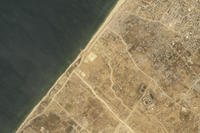 This article first appeared in AviationWeek.com.
This article first appeared in AviationWeek.com.
Because of budget constraints, the U.S. should invest in just a single boost-phase missile defense system, the former director of the Missile Defense Agency (MDA) says.
"I don't believe we need to carry dual boost phase missile defense capability," "I think we need to have either an operationally effective Airborne Laser [ABL] or an operationally effective Kinetic Energy Interceptor [KEI]," retired Air Force Lt. Gen. Henry "Trey" Obering said April 3. "I would go with one of those, not both," he told a news conference organized by an advocacy group ahead of an announced rocket launch by North Korea.
Obering, who joined the Missile Defense Advocacy Alliance shortly after retiring from the military, said he favored the ABL, a modified Boeing 747-400F equipped with a powerful chemical laser, "if it proves to be operationally affordable." Otherwise, "KEI is the only alternative," although it is still in development and not expected to be effective against missiles in all phases of their flight path. Obering noted Northrop Grumman's KEI was developed as an alternative to ABL because the flying laser was considered a high-risk technology. ABL is slated for a test of the entire weapon system against a ballistic missile later this year.
Obering also said he strongly favored investment in a satellite sensor system, like Northrop's Space Tracking and Surveillance System (STSS), to track ballistic missiles from launch to destruction or impact. "That's critically important in being able to deal with more complex threats," Obering said. For the same reason he favored funding the Multiple Kill Vehicle, calling it a good path to follow in the near term "even in a resource-constrained environment." Obering favors combining the ABL and STSS with the proven shipborne Aegis missile system and ground-based midcourse interceptors as part of a layered approach to missile defense.
Boost-phase defensive weapons that can destroy an attacking missile shortly after its launch, or boost, phase should be part of that layered approach, according to other missile defense advocates. At a gathering on Capitol Hill, defense contractors promoted their respective companies' answer to boost-phase missile defense.
Read the rest of this story, read about the NLOS-C's biggest defender and see how LockMart is pushing for Lightnings in Oz from our friends at Aviation Week, exclusively on Military.com.
-- Christian








